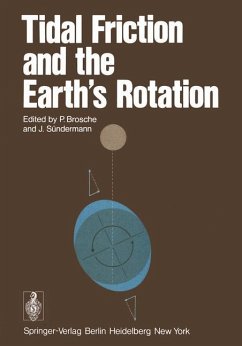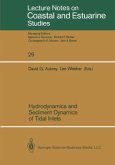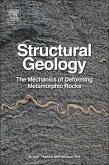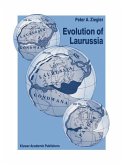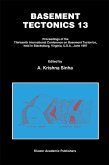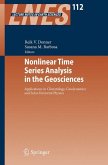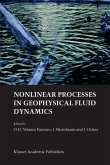Tidal Friction and the Earth's Rotation
Mitarbeit: Bonatz, M.; Brosche, P.; Calame, O.; Enslin, H.; Lambeck, R.; Herausgegeben von Brosche, P.; Sündermann, J.
Tidal Friction and the Earth's Rotation
Mitarbeit: Bonatz, M.; Brosche, P.; Calame, O.; Enslin, H.; Lambeck, R.; Herausgegeben von Brosche, P.; Sündermann, J.
- Broschiertes Buch
- Merkliste
- Auf die Merkliste
- Bewerten Bewerten
- Teilen
- Produkt teilen
- Produkterinnerung
- Produkterinnerung
P.Brosche The development of the ideas and observational techniques related to the subject of our meeting "Tidal friction and the Earth's rotation", Bielefeld, September 1977 is one of the most fascinating books - not merely chapters! - of the modern history of science. Its genealogical tree is as intricate as that of mankind itself: There are dead ends and superfluous re-discoveries. Due to these circumstances and to the pure extent of the topic, it is impossible to give more than a few highlights here. The first relevant observational fact was discovered by the famous English astronomer E.…mehr
Andere Kunden interessierten sich auch für
![Hydrodynamics and Sediment Dynamics of Tidal Inlets Hydrodynamics and Sediment Dynamics of Tidal Inlets]() Hydrodynamics and Sediment Dynamics of Tidal Inlets77,99 €
Hydrodynamics and Sediment Dynamics of Tidal Inlets77,99 €![Structural Geology Structural Geology]() Bruce E. HobbsStructural Geology79,99 €
Bruce E. HobbsStructural Geology79,99 €![Evolution of Laurussia Evolution of Laurussia]() Peter A. ZieglerEvolution of Laurussia38,99 €
Peter A. ZieglerEvolution of Laurussia38,99 €![Neoproterozoic Geobiology and Paleobiology Neoproterozoic Geobiology and Paleobiology]() Shuhai Xiao / Alan J. Kaufman (eds.)Neoproterozoic Geobiology and Paleobiology115,99 €
Shuhai Xiao / Alan J. Kaufman (eds.)Neoproterozoic Geobiology and Paleobiology115,99 €![Basement Tectonics 13 Basement Tectonics 13]() Basement Tectonics 13112,99 €
Basement Tectonics 13112,99 €![Nonlinear Time Series Analysis in the Geosciences Nonlinear Time Series Analysis in the Geosciences]() Nonlinear Time Series Analysis in the Geosciences113,99 €
Nonlinear Time Series Analysis in the Geosciences113,99 €![Nonlinear Processes in Geophysical Fluid Dynamics Nonlinear Processes in Geophysical Fluid Dynamics]() Nonlinear Processes in Geophysical Fluid Dynamics112,99 €
Nonlinear Processes in Geophysical Fluid Dynamics112,99 €-
-
-
P.Brosche The development of the ideas and observational techniques related to the subject of our meeting "Tidal friction and the Earth's rotation", Bielefeld, September 1977 is one of the most fascinating books - not merely chapters! - of the modern history of science. Its genealogical tree is as intricate as that of mankind itself: There are dead ends and superfluous re-discoveries. Due to these circumstances and to the pure extent of the topic, it is impossible to give more than a few highlights here. The first relevant observational fact was discovered by the famous English astronomer E. Halley in 1695 (Berry, 1961). He simply could not arrive at an agreement between ancient and recent eclipses using a constant mean angular motion of the Moon. Instead, he had to intro duce an empirical acceleration term in the mean motion. Known as the "secular acceleration", it has ever since been a most challenging sub ject of celestial mechanics and a main branch of the genealogical tree already mentioned. In 1754, completely independently and almost certainly in ignorance of those specialists' activities, the German philosopher Kant established the idea of tidal friction as a decelerating mechanism for the rotation of the Earth (Felber, 1974). Although he made some errors in his rough computations, the majority of the constitutive elements of his concept have survived to the present day (Brosche, 1977).
Produktdetails
- Produktdetails
- Verlag: Springer / Springer Berlin Heidelberg / Springer, Berlin
- Artikelnr. des Verlages: 978-3-540-09046-5
- 1978.
- Seitenzahl: 256
- Erscheinungstermin: 1. Dezember 1978
- Englisch
- Abmessung: 244mm x 170mm x 15mm
- Gewicht: 475g
- ISBN-13: 9783540090465
- ISBN-10: 3540090460
- Artikelnr.: 36122476
- Herstellerkennzeichnung
- Springer-Verlag GmbH
- Tiergartenstr. 17
- 69121 Heidelberg
- ProductSafety@springernature.com
- Verlag: Springer / Springer Berlin Heidelberg / Springer, Berlin
- Artikelnr. des Verlages: 978-3-540-09046-5
- 1978.
- Seitenzahl: 256
- Erscheinungstermin: 1. Dezember 1978
- Englisch
- Abmessung: 244mm x 170mm x 15mm
- Gewicht: 475g
- ISBN-13: 9783540090465
- ISBN-10: 3540090460
- Artikelnr.: 36122476
- Herstellerkennzeichnung
- Springer-Verlag GmbH
- Tiergartenstr. 17
- 69121 Heidelberg
- ProductSafety@springernature.com
Historical Background and Introduction.- References.- Pre-Telescopic Astronomical Observations.- 1. Introduction.- 2. Historical Development.- 3. Inter-Relation of Parameters.- 4. Recent Investigations.- 5. Remarks on the Selection of Suitable Observations.- 6. Observations of Total and Near-Total Solar Eclipses.- 7. Method of Analysis.- 8. Geophysical Discussion.- 9. Conclusions.- References.- Tidal Deceleration of the Earth's Rotation Deduced from Astronomical bservations in the Period A.D. 1600 to the Present.- 1. Introduction and Principle of Method.- 2. Moon's Orbital Angular Deceleration.- 2.1 Deceleration with Respect to Dynamical Time.- 2.2 Deceleration with Respect to Atomic Time.- 3. Tidal Deceleration of Earth's Rotation.- 4. Conclusions.- References.- Determination of the Rotation of the Earth (at Present).- 1. Introduction.- 1.1 Preview.- 2. General Features of the Rotation of the Earth.- 2.1 Variation in the Earth's Rate of Rotation.- 2.2 Polar Motion.- 3. Equatorial System.- 4. Astronomic Longitude and Latitude.- 5. Time Scales.- 5.1 Astronomic Time.- 5.2 Atomic Time.- 6. Methods and Instruments of Observation.- 6.1 Optical Instruments.- 6.2 Doppler Satellite Measurements.- 7. Data Analysis Centers.- 8. Results on the Rotation of the Earth.- References.- Effect of Tidal Friction on the Lunar Orbit and the Rotation of Earth and Its Determination by Laser Ranging.- 1. Introduction.- 2. The Physical Problem.- 3. The Laser Technique and Its Application.- 4. Determination of the Lunar Acceleration.- 5. Comparisons and Difficulties of Interpretation.- References.- Appendix A: Comments on the Perturbed Mean Motion 52 ppendix B: Reality of the Venus Effect 53 ides of the Solid Earth from Gravimetric Measurements.- 1. Introduction.- 2. Basic Concepts.-3. The Tidal Potential.- 4. Determination of LOVE numbers from Gravimetric Data.- 5. Instrumentation.- 6. Actual Problems.- 7. Recent Results.- 8. Future Activities.- References.- Tidal Friction in the Solid Earth: Loading Tides Versus Body Tides.- 1. Introduction.- 2. Dissipated Tidal Energy in the Solid Earth.- 2.1 Theory of Dissipation in a Heterogeneous Incompressible Earth.- 2.2 Dissipation of Body Tide Energy.- 2.3 Dissipation of Loading Tide Energy.- 3. Global Tidal Q and Tidal Phase Shifts.- 3.1 Loading Tide Q Versus Body Tide Q.- 3.2 Numerical Results for the Body Tide.- 3.3 Theoretical Relationship between Tidal Bulge Angles, Body Tide Phase Shifts, and the Global Body Tide Q.- 3.4 Some More Numerical Examples.- 3.5 Numerical Results for the Loading Tides.- 4. Conclusions.- References.- Tidal Dissipation in the Oceans.- References.- The Influence of Solid Earth Deformations on Semidiurnal and iurnal Oceanic Tides.- 1. Introduction.- 2. Considering Tidal Loading and Ocean Self-Attraction in.- Ocean-Tide Models.- 2.1 Tidal Integrodifferential Equations and the Energy-Equation Belonging to Them.- 2.2 Properties of Different Ocean-Tide Models.- 3. Generalization of the 4°-Primitive-Equations Model.- 3.1 The Finite-Difference Scheme.- 3.2 Oceanic Tides on a Nonrotating Earth.- 4. The Computed Global M2-Tide.- 5. The Computed Global K1-Tide.- 6. Conclusions.- Glossary of Symbols.- References.- The Numerical Computation of Tidal Friction for Present and ncient Oceans.- 1. Introduction.- 2. Computation of Tidal Friction by Hydrodynamic-Numerical.- Models.- 2.1 Basic Equations.- 2.2 Analytic Considerations.- 2.3 Hydrodynamic-Numerical Models.- 3. A Numerical Model for the Present Ocean.- 3.1 Requirements.- 3.2 Balance of Angular Momentum.- 4. Numerical Model forAncient Oceans.- 4.1 Necessity of Such a Model.- 4.2 Bathymetry.- 4.3 Application to the Permian Ocean.- 4.4 Verification.- 5. Further Activities.- References.- The Earth's Palaeorotation.- 1. The Coral Data.- 2. The Bivalve Data.- 3. Stromatolite Data.- 4. Combined Data 1.- References.- Periodic Growth Features in Fossil Organisms and the Lenght of the ay and Month.- 1. Introduction.- 2. Biological Considerations.- 2.1 Growth Increments in Corals.- 2.2 Growth Increments in Bivalves.- 2.3 Growth Increments in Stromatolites.- 2.4 Biological Clocks.- 3. The Data.- 3.1 Recording the Data.- 3.2 The Published Data.- 4. Implications of the Growth Increment Data.- 5. Conclusions.- References.- Geological and Geophysical Evidence Relating to Continental rowth and Dynamics and the Hydrosphere in Precambrian Times: Review and Analysis.- 1. Introduction.- 2. The Hydrosphere.- 3. The Continental Crust.- 4. Precambrian Dynamics of the Continental Crust.- 5. Palaeomagnetic Analysis of Precambrian Crustal Movements.- 5.1 Gondwanaland-Late Precambrian and Lower Palaeozoic.- 5.2 Laurentian Shield-Upper Proterozoic.- 5.3 African Shield-Upper Proterozoic.- 5.4 Laurentian Shield-Middle-Lower Proterozoic.- 5.5 Africa-Middle-Lower Proterozoic.- 5.6 Australia-2600-1100 my.- 5.7 Baltic-Ukrainian Shield-2000-1200 my.- 6. Palaeomagnetic Correlations Between the Proterozoic Shields.- 7. Proterozoic Supercontinent.- 8. Age of the Earth-Moon System.- 9. Stromatolite Evidence for Precambrian Tidal Parameters.- 10. Sedimentologic Evidence for Precambrian Tidal Parameters.- 11. The Tidal Couple and Changes in the Earth's Rotation in Precambrian Times.- References.- Concluding Remarks.
Historical Background and Introduction.- References.- Pre-Telescopic Astronomical Observations.- 1. Introduction.- 2. Historical Development.- 3. Inter-Relation of Parameters.- 4. Recent Investigations.- 5. Remarks on the Selection of Suitable Observations.- 6. Observations of Total and Near-Total Solar Eclipses.- 7. Method of Analysis.- 8. Geophysical Discussion.- 9. Conclusions.- References.- Tidal Deceleration of the Earth's Rotation Deduced from Astronomical bservations in the Period A.D. 1600 to the Present.- 1. Introduction and Principle of Method.- 2. Moon's Orbital Angular Deceleration.- 2.1 Deceleration with Respect to Dynamical Time.- 2.2 Deceleration with Respect to Atomic Time.- 3. Tidal Deceleration of Earth's Rotation.- 4. Conclusions.- References.- Determination of the Rotation of the Earth (at Present).- 1. Introduction.- 1.1 Preview.- 2. General Features of the Rotation of the Earth.- 2.1 Variation in the Earth's Rate of Rotation.- 2.2 Polar Motion.- 3. Equatorial System.- 4. Astronomic Longitude and Latitude.- 5. Time Scales.- 5.1 Astronomic Time.- 5.2 Atomic Time.- 6. Methods and Instruments of Observation.- 6.1 Optical Instruments.- 6.2 Doppler Satellite Measurements.- 7. Data Analysis Centers.- 8. Results on the Rotation of the Earth.- References.- Effect of Tidal Friction on the Lunar Orbit and the Rotation of Earth and Its Determination by Laser Ranging.- 1. Introduction.- 2. The Physical Problem.- 3. The Laser Technique and Its Application.- 4. Determination of the Lunar Acceleration.- 5. Comparisons and Difficulties of Interpretation.- References.- Appendix A: Comments on the Perturbed Mean Motion 52 ppendix B: Reality of the Venus Effect 53 ides of the Solid Earth from Gravimetric Measurements.- 1. Introduction.- 2. Basic Concepts.-3. The Tidal Potential.- 4. Determination of LOVE numbers from Gravimetric Data.- 5. Instrumentation.- 6. Actual Problems.- 7. Recent Results.- 8. Future Activities.- References.- Tidal Friction in the Solid Earth: Loading Tides Versus Body Tides.- 1. Introduction.- 2. Dissipated Tidal Energy in the Solid Earth.- 2.1 Theory of Dissipation in a Heterogeneous Incompressible Earth.- 2.2 Dissipation of Body Tide Energy.- 2.3 Dissipation of Loading Tide Energy.- 3. Global Tidal Q and Tidal Phase Shifts.- 3.1 Loading Tide Q Versus Body Tide Q.- 3.2 Numerical Results for the Body Tide.- 3.3 Theoretical Relationship between Tidal Bulge Angles, Body Tide Phase Shifts, and the Global Body Tide Q.- 3.4 Some More Numerical Examples.- 3.5 Numerical Results for the Loading Tides.- 4. Conclusions.- References.- Tidal Dissipation in the Oceans.- References.- The Influence of Solid Earth Deformations on Semidiurnal and iurnal Oceanic Tides.- 1. Introduction.- 2. Considering Tidal Loading and Ocean Self-Attraction in.- Ocean-Tide Models.- 2.1 Tidal Integrodifferential Equations and the Energy-Equation Belonging to Them.- 2.2 Properties of Different Ocean-Tide Models.- 3. Generalization of the 4°-Primitive-Equations Model.- 3.1 The Finite-Difference Scheme.- 3.2 Oceanic Tides on a Nonrotating Earth.- 4. The Computed Global M2-Tide.- 5. The Computed Global K1-Tide.- 6. Conclusions.- Glossary of Symbols.- References.- The Numerical Computation of Tidal Friction for Present and ncient Oceans.- 1. Introduction.- 2. Computation of Tidal Friction by Hydrodynamic-Numerical.- Models.- 2.1 Basic Equations.- 2.2 Analytic Considerations.- 2.3 Hydrodynamic-Numerical Models.- 3. A Numerical Model for the Present Ocean.- 3.1 Requirements.- 3.2 Balance of Angular Momentum.- 4. Numerical Model forAncient Oceans.- 4.1 Necessity of Such a Model.- 4.2 Bathymetry.- 4.3 Application to the Permian Ocean.- 4.4 Verification.- 5. Further Activities.- References.- The Earth's Palaeorotation.- 1. The Coral Data.- 2. The Bivalve Data.- 3. Stromatolite Data.- 4. Combined Data 1.- References.- Periodic Growth Features in Fossil Organisms and the Lenght of the ay and Month.- 1. Introduction.- 2. Biological Considerations.- 2.1 Growth Increments in Corals.- 2.2 Growth Increments in Bivalves.- 2.3 Growth Increments in Stromatolites.- 2.4 Biological Clocks.- 3. The Data.- 3.1 Recording the Data.- 3.2 The Published Data.- 4. Implications of the Growth Increment Data.- 5. Conclusions.- References.- Geological and Geophysical Evidence Relating to Continental rowth and Dynamics and the Hydrosphere in Precambrian Times: Review and Analysis.- 1. Introduction.- 2. The Hydrosphere.- 3. The Continental Crust.- 4. Precambrian Dynamics of the Continental Crust.- 5. Palaeomagnetic Analysis of Precambrian Crustal Movements.- 5.1 Gondwanaland-Late Precambrian and Lower Palaeozoic.- 5.2 Laurentian Shield-Upper Proterozoic.- 5.3 African Shield-Upper Proterozoic.- 5.4 Laurentian Shield-Middle-Lower Proterozoic.- 5.5 Africa-Middle-Lower Proterozoic.- 5.6 Australia-2600-1100 my.- 5.7 Baltic-Ukrainian Shield-2000-1200 my.- 6. Palaeomagnetic Correlations Between the Proterozoic Shields.- 7. Proterozoic Supercontinent.- 8. Age of the Earth-Moon System.- 9. Stromatolite Evidence for Precambrian Tidal Parameters.- 10. Sedimentologic Evidence for Precambrian Tidal Parameters.- 11. The Tidal Couple and Changes in the Earth's Rotation in Precambrian Times.- References.- Concluding Remarks.

